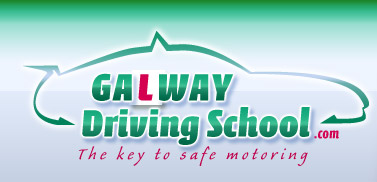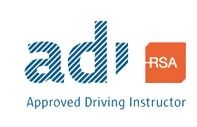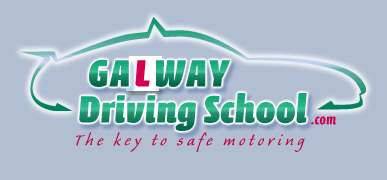Theory questions before driving test
Below are some questions asked to previous students, we recommend you read the rules of the road www.rulesoftheroad.ie and use these questions and answers as a guide.
1. When can you overtake on the left?
When the driver in front of you is turning right, when you intend to turn left, when the vehicles in the lane on your right is moving slow.
2. At a junction with roads of equal importance, to who should you give way?
Traffic on the right and traffic already turning.
3. At a STOP sign which has no white line, where would you stop?
At the STOP sign.
4. What position would you take up for a right turn in a one way street?
The extreme right hand lane.
5. How would you know a zebra crossing at night?
By the yellow flashing beacons.
6. What does the island in the centre of a pedestrian crossing mean?
Each side of the island is a separate crossing.
7. Name the restrictions in relation to the use of the horn?
It must not be used between the hours of 11.30pm and 7.00am in a built up area, except in an emergency.
8. When driving at night when should you dip your headlights?
(a) When meeting oncoming traffic
(b) when following close behind another vehicle
(c) on continuously lit roads
(d) at the beginning and end of lighting up hours
(e) in fog or snow.
9. What should you do if dazzled by lights of an oncoming vehicle?
Slow down or stop if necessary.
10. What is a clearway?
Stopping and parking prohibited (except by buses or taxis) for a period indicated on the sign.
11. What does a broken yellow line mean?
A broken yellow line marks the edge of the road (also known as a hard shoulder)
12. What does a single yellow line mean?
No parking at certain times (generally during working hours)
13. What does a double yellow line mean?
No parking at any time.
14. What is the legal parking distance from the kerb?
no more than half a meter
15. How close to a junction can you park?
5 meters
16. Where should you not park?
Near a bend, the brow of a hill, a humpback bridge, at a continuous white line, where your vehicle would obstruct a sign, at an entrance, at a bus stop, opposite another vehicle on a narrow road or at a taxi rank.
17. Where should you not overtake?
At a bend, a junction, a brow of a hill, a humpback bridge, at a continuous white line or anywhere your view of oncoming traffic is restricted.
18. What is the safe distance to drive from the car in front?
Allow 1 meter for each kph and double if the surface is wet or observe the "two second rule".
19. If you saw a red triangle on the road, what would it mean?
That there is an obstruction or a breakdown ahead.
20. At a junction when traffic lights are not working, to whom should you give way?
Traffic on the right and traffic already turning.
21. What does a green traffic light mean?
Go; provided junction is clear.
22. What does an amber traffic light mean?
Stop unless you are too close to stop safely behind the white lines.
23. Name three people in authority for whom you must stop?
A Garda, a school warden or a person in charge of animals.
24. Describe the road markings for No Entry?
A continuous white line with a broken white line behind it.
25. When can you cross a continuous white line?
To avoid an obstruction, for access, or if there is a broken white line on your side of the continuous white line.
26. (A) what is the national speed limit?
(b) What is the motorway speed limit?
(c) What is the minimum tyre depth?
(a) 100 kph for cars, 80 kph for trucks
(b) 120 kph
(c) 1.6 mm
27. What rules apply to a box junction?
You must not enter unless your way ahead is clear with the exception of turning right. When you can enter and wait in the box if you are not obstructing other traffic who has right of way.
28. If there are two parallel white lines in the centre of the road, one continuous, one broken, which one would you obey?
You obey the line on your side of the road.
29. What do two parallel broken white lines in the centre of the road mean?
There will be one or two continuous white lines ahead.
30. What does a broken white line in the centre of the road mean?
You may overtake if safe to do so.
31. What do white horizontal lines in the centre of the road mean?
You treat them like a traffic island, you don't enter.
32. Why are a STOP sign octagonal and a YIELD sign triangular
To recognise them in snow conditions.
33. Where would you see a flashing red light?
At a level crossing.
34. How would you check if you were the only one around if your brake lights were working?
Reverse the car to a reflective surface, i.e. a window or a white wall.
35. When can you stop on a hard shoulder of a motorway?
Only when your vehicle has broken down.
"like" us on facebook if you find the information helpfull simply click on the link below
www.facebook.com/Galwaydrivingschool







